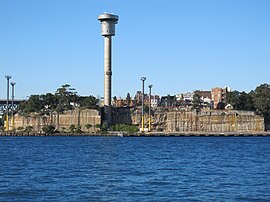The
Ford Australia plant’s first products were Model Ts assembled from "complete knock-down (CKD) kits" provided
by Ford of Canada. Nevertheless, it is best known in more recent times for
having produced the Falcon,
originally a U.S. model
introduced in Australia in 1960, but adapted to Australian requirements and
road conditions. Since the release of the XA model in 1972, Falcons have been
fully Australian designed. It also produces a four-wheel-drive model called the Territory.
Ford
Australia is the only Australian car manufacturer which designs and
manufactures its own unique high-volume engines.
Ford Australia’s Geelong plant today
The story of the utility truck or coupé utility–
the ute – began in 1932, when a letter was received by Ford Australia’s plant
at Geelong, Victoria. It was written by a farmer’s wife who’d had enough of
riding to church in the farm truck and arriving in saturated clothing;
‘Why don’t you build people like us a vehicle to go
to church in on a Sunday, and which can carry our pigs to market on Mondays?’
her letter asked.
Bank managers at the time would lend money to farmers
to buy a farm truck, but not a passenger car, hence the plea from one
very fed up woman!
It arrived on the desk of managing director Hubert
French who, instead of dictating a polite dismissal, passed the letter on to
sales manager Scott Inglis.
He in turn showed it to
plant superintendent Slim Westman, and the two of them took it to Ford
Australia’s design department, which in 1932 consisted of one man .....… Lewis
Thornet Bandt was 22 years old and had already been singled out for bigger
things with Ford.
Interviewed shortly before
his death in 1987, Bandt recalled the moment when Westman and Inglis came to
him with the letter.
The brochure for the first utility
The whole thing had
already started to germinate," said Bandt. "Westman quite rightly
reckoned that if we cut down a car and put a tray on the back, the whole thing
would tear in half once there was weight in the back.
"I told him I would
design it with a frame that came from the very back pillar, through to the
central pillars, near the doors. I would arrange for another pillar to further
strengthen that weak point where the cabin and tray joined. I said to Westman
`Boss, them pigs are going to have a luxury ride around the city of Geelong!’"
Bandt began by sketching
the coupé utility on a 10 metre blackboard, depicting a front view as well as
side and rear elevations. When they were seen by Westman some weeks later, he
told Bandt to build two prototypes.
The
vintage Ford ute that Bandt had rebuilt for himself (rego number UT 001) in
which – quite ironically – he was killed in a collision with a sandtruck on March
18, 1987.
On a wheelbase of 112
inches, with a rear tray that was 5ft 5ins long and had a payload of 1200
pounds, they were the first vehicles to also offer a comfortable all-weather
cabin.
On first sight of the
prototypes, Scott Inglis authorised a startup production run of 500 vehicles.
Westman asked for – and got - £10,000 for tooling, and the first coupé
utilities rolled off the Geelong assembly line in 1934.
Not all
Australian farmers could afford the asking price for a brand new Ford Utility
and during the period of WWII cargo carrying trucks were in demand. Some showed
that necessity is the mother of invention and constructed their own utility
trucks by cutting down a sedan car and adding a tray back.
A typical farm sedan at an old country homestead, 1946
(Maxwell Spencer Dupain AC image)
A ‘cut-down sedan’, come utility truck on North Terrace, Adelaide, 1947
(Maxwell Spencer Dupain AC image)
Born out of a woman’s
frustration with car designs of the day, the enclosed cab utility was initially
regarded as a luxury. But the `ute’ was quickly accepted as a necessity of bush
life, and won recognition around the world as the ideal farmer’s or tradesman’s
vehicle.
Owning a "Ute" or a "truck" is almost de rigeur for many Australian males, especially those who live in rural areas. The 4WD diesel varieties such as the Toyota Land Cruiser or the Nissen Patrol are most popular with the farming fraternity because of their 'raw power' and traction, however, the petrol engined Prado's, Colarado's and Rodeo's are more popular with 'townies'.
I have owned several "Utes", in fact, my first vehicle was a Phase 1 Standard Vanguard Utility which I bought second hand in 1959 - an ex-tradesman's cast-off vehicle - a column shift manual geared monster-weighted vehicle with a 4 cyclinder short stroke engine that had a habit of burning out clutches.
Phase I Standard Vanguard Utility of the type I owned in the late 1950's
Currently I own a GMH (General Motors Holden) Rodeo which is a vehicle I love and have extensively modified to suit our touring activities.
Rodeo LT when first purchased
I've added an electric tow brake mechanism, bullbar, driving lights, foglights. uplift rear suspension, heavy duty towbar, a tray liner, a rear canopy, a second 12volt battery system to run devices like a portable refrigerator/freezer, rear mounted camera with a 5" dash mounted video screen, GPS mapping system and a whole lot of other items.
While we no longer tow a caravan it was ideally set up to do so and it is still used to tow a small box trailer for gathering heavier loads for the garden or for building construction.
The Rodeo LT in its caravanning days.
It's a fair statement that Australians love their trucks! I live next to a High School and the number of Mum's who rock up to drop-off or pick-up their kids in the family truck is quite significant and only bested by those who come in 4WD Sports sedans and ATV's.












































